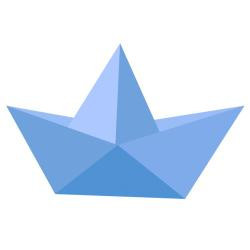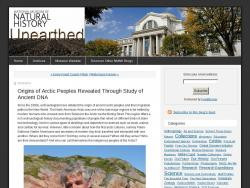Michele Hubert's collections
Force, Work, Motion -- Lesson Plans and Information
<p>How do canoes work? How do they float/move in the water?</p>
<p>An object will float<strong> </strong>if the gravitational (downward) force is less than the buoyancy (upward) force. So, in other words, an object will float if it weighs less than the amount of water it displaces. This explains why a rock will sink while a huge boat will float. The rock is heavy, but it displaces only a little water.<br /></p>
 Michele Hubert
Michele Hubert
5
Migration - Lesson Plans and Information
<p>How was migration affected by the use of canoes/boats?</p>
<p>The earliest human <strong>migrations</strong> and expansions of archaic and modern humans across continents began 2 million years ago with the <strong>migration</strong> out of Africa of Homo erectus. This was followed by the <strong>migrations</strong> of other pre-modern humans including Homo heidelbergensis, the likely ancestor of both modern humans and Neanderthals.<br /></p>
 Michele Hubert
Michele Hubert
6
Navigation: Past and Present -- Lesson Plans and Information
<p>By the dawn of the sixteenth century, the ancient art of navigation had begun to develop rapidly in response to new advancements that enabled oceanic explorers to more accurately locate their positions without landmarks, to determine the locations of their discoveries, and to establish routes between the new-found lands and home. Although the relationship of certain heavenly bodies to time of day and terrestrial directions had been known since ancient times, the first two decades of the sixteenth century saw the rigorous application of astronomy and mathematics to navigation.</p>
<p>Navigation is based largely on the spherical coordinates <strong>latitude</strong> -angular distance north or south of the equator - and <strong>longitude</strong> - angular distance east or west of a generally accepted reference location, such as the Greenwich Observatory in London, United Kingdom. Finding longitude requires measuring the angle contained between the meridian of a particular place and some prime meridian, that was located in Greenwich, England, and expressed either in degrees or by some corresponding differences in time. Mechanical time-pieces existed in the Elizabethan era, but until the late eighteenth century they had to be corrected frequently by sun sightings and were therefore almost useless aboard ship. Measuring latitude, on the other hand, does not require an accurate time-piece. Refinement of instruments enabled sixteenth-century mariners to determine latitude with reasonable accuracy. </p>
 Michele Hubert
Michele Hubert
25




